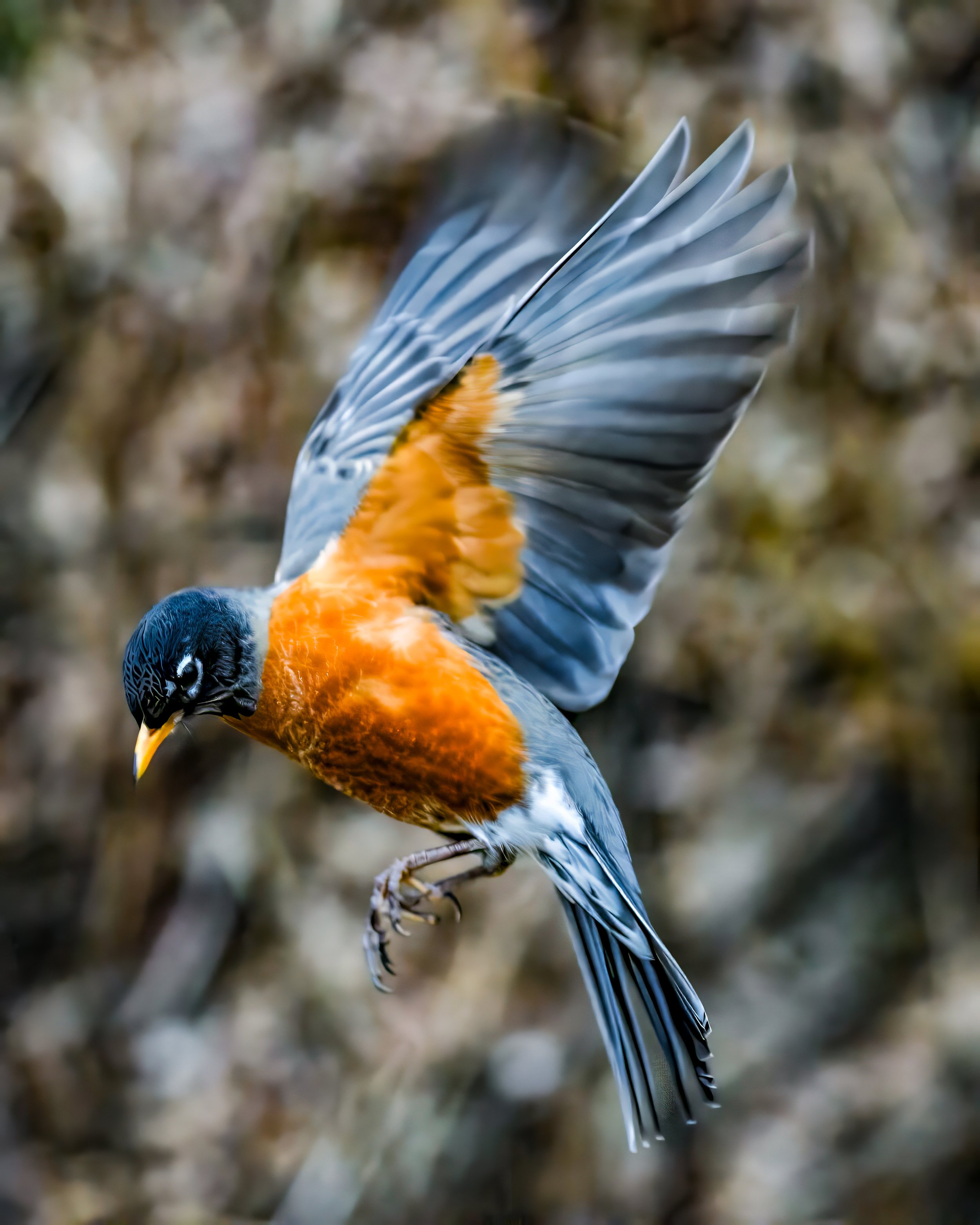Flight
Many robins stay in Minnesota during the winter, following food sources instead of migrating south. They are able to survive the cold by:
Gathering in flocks and eating fruit and berries: Robins eat the hard fruits of trees like hackberry, crabapple, hawthorn, holly, and juniper during the winter months. When they eat honeysuckle berries exclusively, they sometimes become intoxicated.
Robins in the winter can also been seen huddling together: They huddle together on branches and fluff out their feathers to stay warm. One of the most common places to see Robins in the winter is around bird baths, because they still need water. This picture was taken as the bird came in for a drink.
An American Robin can produce three successful broods in one year. On average, though, only 40 percent of nests successfully produce young. Only 25 percent of those fledged young survive to November. From that point on, about half of the robins alive in any year will make it to the next. Despite the fact that a lucky robin can live to be 14 years old, the entire population turns over on average every six years.
Robin roosts can be huge, sometimes including a quarter-million birds during winter. In summer, females sleep at their nests and males gather at roosts.
